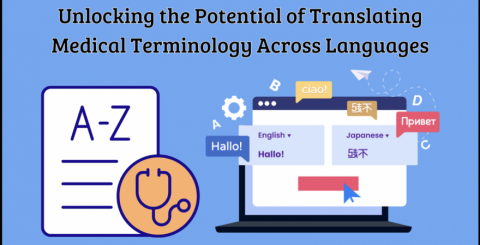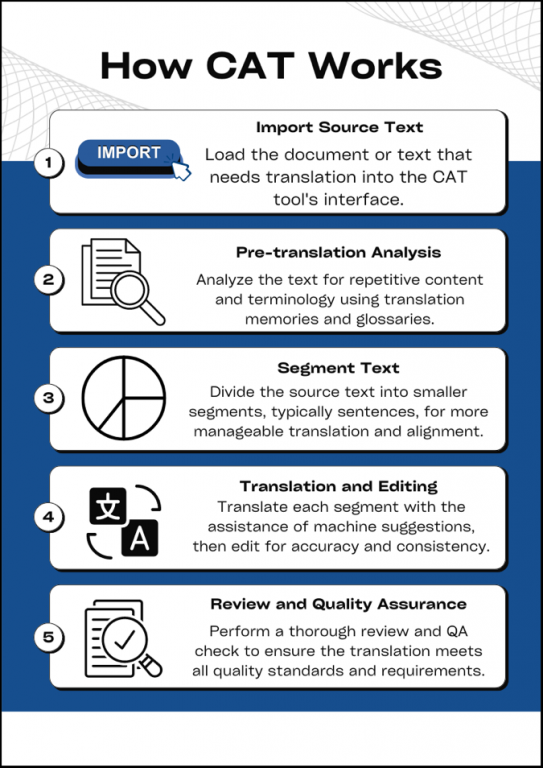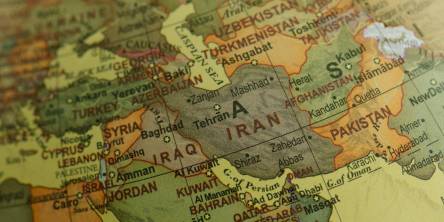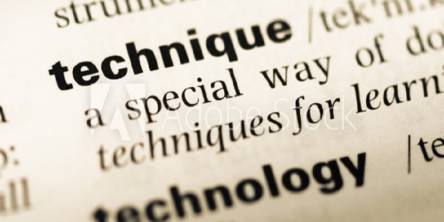Unlocking the Potential of Translating Medical Terminology Across Languages

If you are a healthcare provider or employed in the department, you are more likely than not to understand the significance of effective communication particularly in the context of medical information dissemination across various languages and cultures.
This has consequently led to an increase in demand for accurate and reliable medical document translation services as the scope of medical knowledge keeps expanding and patients continue to seek treatment services from healthcare givers.
This article dives into the elements of translation and offers valuable insights to assist you in navigating this vital aspect of healthcare.
The Challenges of Medical Terminology Translation
Medical terminology is complex as it is filled with terms, acronyms, and abbreviations that can differ among medical fields and regions. For efficient translation, medical translators must possess an understanding of these terms in both the original language and the target language.
Moreover, medical terminology evolves continuously as new terms emerge alongside advancements in knowledge and technology. This necessitates that medical translators remain updated on the developments within their domain.
The Role of Subject Matter Expertise
Medical translators require subject matter expertise because it helps them understand the topics, processes, and terms under discussion at a deeper level. Translation accuracy depends on an individual who understands medical concepts, terminologies, and procedures.
Professionalism in medical translation can only be attained through possessing such specialization where a person has an active lifestyle or takes part in activities like nursing while studying for it. They can also more easily identify and resolve potential ambiguities or inconsistencies in the source text, drawing upon their knowledge of the subject matter to make informed decisions.
This focus on expertise ensures that medical document translation services can consistently meet the rigorous demands of the healthcare industry. Certified medical translators are good at translating complex medical terms by using simple English words.
Educational background on topics being translated enhances quality too but most important is experience from practice years gone before honing skills needed hence becoming what they are today who still want improvement as well by consulting others bound within their circle even outside its boundaries even if they do not believe in anything about them at all even a single word all written about the subject readiness for change requirements highly recommended to all parties herein involved.
Furthermore, subject matter experts can serve as valuable resources for consultation and collaboration, working closely with other translators and healthcare professionals to ensure the accuracy and effectiveness of the final translated product.
Investing in the development of subject matter expertise among medical translators is essential for maintaining high standards of quality and reliability in medical document translation services.
The Importance of Cultural and Contextual Understanding
Translating Medical content involves more than changing language names, it also requires comprehension of its social context when it was composed by the author(s), and also the social context when the text will be used after translation.
Cultural beliefs, values, and practices play a role in how medical information is perceived, understood, and acted upon. Medical translators need to be mindful of these nuances and adjust their translations accordingly to ensure that the message is effectively communicated to the intended audience.
Such changes may involve tweaking examples or references so they are pertinent to the target culture, as well as providing explanations on concepts that could be unclear or misinterpreted due to unfamiliarity.
Neglecting cultural and contextual considerations can result in misunderstandings, communication breakdowns, and serious repercussions in healthcare environments.
Technological Advancements in Medical Translation
Technological advancements have revolutionized the field of medical translation, providing tools and platforms that can streamline the translation process, improve efficiency, and enhance quality. Machine translation systems, powered by artificial intelligence and neural networks, can quickly generate draft translations of medical texts, which can then be reviewed and refined by human translators.
The initial translation work time and effort can be significantly reduced which in turn allows translators to concentrate on more complicated and sensitive elements of the task. In order to maintain consistency as well as accuracy in large amounts of medical content, which decreases chances of mistakes and inconsistencies these include computer-assisted translation tools (CAT) e.g., translation memories and terminology management systems.
Additionally, online collaboration platforms and cloud-based services enable medical translators to work together seamlessly across geographic boundaries, sharing resources, expertise, and best practices in real time.
With the continued advancement of technology, it is important that medical interpreters know what tools and methods are new to them and how they can incorporate them into their work processes in order to make it easier and of better quality.

Best Practices for Effective Medical Terminology Translation
- Collaborate with subject matter experts and healthcare professionals to ensure accurate understanding and interpretation of medical terms.
- Stay updated on the latest medical terminology, abbreviations, and industry developments to maintain translation accuracy.
- Leverage glossaries, style guides, and terminology databases to ensure consistency across translations.
- Prioritize clarity and precision in conveying medical information, as ambiguity can have life-threatening consequences.
- Foster cross-cultural understanding by considering the target audience's cultural background and healthcare system.
- Adhere to industry-specific regulations, guidelines, and best practices for medical translation.
The Impact of Accurate Medical Translation
The impact of accurate medical translation extends far beyond facilitating communication between healthcare providers and patients. It plays a crucial role in advancing medical research and innovation by enabling the dissemination of scientific knowledge across linguistic barriers.
Precise translation of clinical trials, research papers, and medical journals enables groundbreaking discoveries to be shared all over the globe, thus, enhancing the development of new treatments while at the same time contributing to better results for patients.
Accurate medical translation is crucial to guaranteeing the safety of patients and adherence to the prescribed treatments as well. Such mistranslations can lead to lots of confusion and wrong diagnoses and that may cause threats to life too. It is through giving out correct descriptions and explanations that medical translators enable patients to choose wisely concerning their body wellness while engaging in its activities as well.
Building a Strong Medical Translation Workforce
There is an essential need to have a concentrated workforce if we are to meet the rising call for quality medical translations. This requires institutions, professional regulators, healthcare facilities, etc to come up with well-rounded training programs and certification avenues.
Investing in the education and training of translators is essential to maintain a pool of skilled professionals who can effectively handle the intricacies of this vital field.
Fostering Collaboration and Knowledge Sharing
The sharing of knowledge and expertise is essential to effective medical translation. Collaboration can foster common vocabularies, refine translation methods, and set general principles for the whole industry. Such cooperation requires the active involvement of translators, medical personnel, and other field experts.
By fostering an environment of knowledge sharing and continuous learning, we can collectively elevate the quality and consistency of medical translation services.
The Future of Medical Translation
The healthcare industry will continue evolving; meanwhile, demand for reliable and fast medical translations is expected to increase alongside the expansion of knowledge in medicine. The advent of new technologies - machine learning, and artificial intelligence has the potential for transformative translations that have accuracy, and higher productivity rates as well as offering instant translations.
However, it is crucial to recognize that while technological advancements can significantly enhance the translation process, they should be viewed as complementary tools rather than replacements for human expertise.
The nuanced nature of medical terminology and the potential consequences of inaccurate translations necessitate the involvement of skilled human translators who can provide the contextual understanding and cultural sensitivity required for this critical task.
| Aspect | General Translation | Medical Translation |
|
Varies by subject matter |
No |
Yes |
| Accuracy |
Important, but some flexibility |
Critical, with no room for error |
| Cultural Nuance | Relevant, but not always crucial |
Essential for effective communication |
| Regulatory Requirements | Minimal to none | Strict and industry-specific |
| Consequences of Errors |
Varied, depending on the context |
Potentially life-threatening |
Frequently Asked Questions
How can technology assist in medical translation?
Technology streamlines medical translation through machine translation and computer-assisted tools, improving consistency and productivity. However, human expertise remains essential for accurate translations.
What are the best practices for effective medical terminology translation?
Best practices are to collaborate with experts, stay updated on terminology, use glossaries, prioritize clarity, foster cross-cultural understanding, and adhere to industry regulations.
What is the role of educational institutions and professional organizations in building a strong medical translation workforce?
Educational institutions and professional organizations develop comprehensive training and certification programs to cultivate a skilled workforce of qualified medical translators.
Similar Articles
Learn the key differences between formal and informal Persian, including tone, vocabulary, grammar, and their usage in various social contexts.
Does the child in your life speak more than one language? Do you notice them having trouble navigating between the two? How does bilingualism play into speech-language pathology?
Early exposure to English language learning provides you a world of intellectual and social potential. Although it's well known that English is a universal language, you might be surprised by the advantages of learning it at a young age. A child's future can be shaped by early exposure to English in unexpected ways, from confidence-boosting to cognitive development.
As we forge deeper into the digital era, AI language translation is rapidly becoming a pivotal force in global communication, creating unprecedented connections across cultures
Learning to greet someone in a new language is often the first step towards fluency. Understanding how to say hello in Italian is essential due to the language's melodic and expressive nature.
Spanish verbs Both the pillar of a language and the main obstacle to speaking it. Many students are lost during their learning, blocked by the Spanish conjugation, sometimes complex for an English speaker. To break the deadlock, these 10 tips are here to finally master the conjugation of this beautiful language, Spanish.
The translation process consists of understanding the meaning of a text written in a language of origin and transferring it to a target language while retaining the same meaning.
English is an international language and it has become important for everyone to learn and gain mastery over it because it offers plenty of advantages in one’s own personal and professional life.
Matters regarding legal aid translation are sensitive in that they don’t need any barriers caused by language problems, poor translations, or interpretations. The system of providing free advice about the law and practical help with legal matters for individuals who are unable or poor to pay for legal aid services is what we refer to as legal aid.









